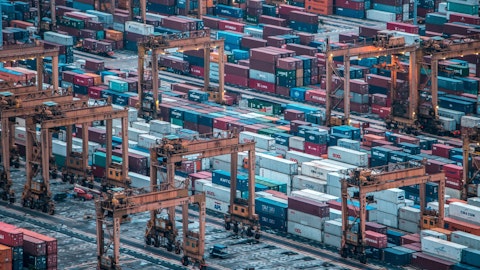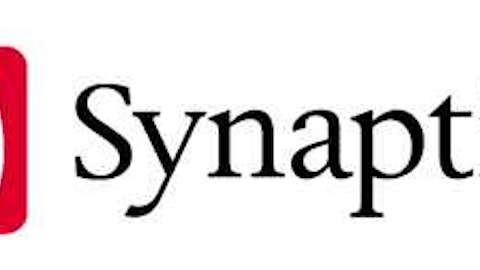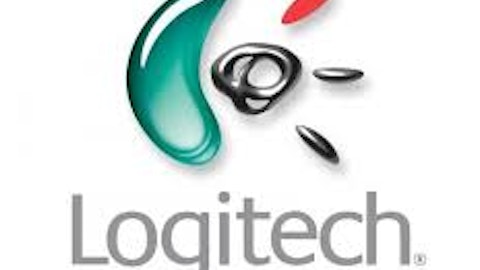Pangaea Logistics Solutions, Ltd. (NASDAQ:PANL) Q3 2023 Earnings Call Transcript November 9, 2023
Pangaea Logistics Solutions, Ltd. beats earnings expectations. Reported EPS is $0.42, expectations were $0.12.
Operator: Good morning. My name is Britney, and I will be your conference operator today. At this time, I would like to welcome everyone to the Pangaea Logistics Solutions Third Quarter 2023 Earnings Teleconference. Today’s call is being recorded and will be available for replay beginning at 11 a.m. Eastern Standard Time. The recording can be accessed by dialing (800) 839-7414 for domestic and (402) 220-6068 for international. [Operator Instructions] It is now my pleasure to turn the floor over to Noel Ryan with Vallum Advisors.
Noel Ryan: Thank you, operator, and welcome to the Pangaea Logistics third quarter 2020 results conference call. Leading the call with me today is CEO, Mark Filanowski; Chief Financial Officer, Gianni Del Signore; and COO, Mads Petersen. Today’s discussion contains forward-looking statements about future business and financial expectations. Actual results may differ significantly from those projected in today’s forward-looking statements due to various risks and uncertainties, including the risks described in our periodic reports filed with the SEC. Except as required by law, we undertake no obligation to update our forward-looking statements. At the conclusion of our prepared remarks, we will open the line for questions. And with that, I would like to turn the call over to Mark.
Mark Filanowski: Thank you, Noel, and welcome to those joining us on the call and webcast today. After the market closed yesterday, we issued a release detailing our third quarter results. The third quarter represents a seasonal peak in demand levels across our Arctic trades. Our global fleet of ice-class vessels were fully utilized in the period. Fleet utilization and our deep portfolio of COAs contributed to an earned TCE rate that exceeded the broader market index by nearly 50%. Our TCE earned was $15,748 per day for the 3 months ended September 30, 2023, compared to an average of $24,107 per day for the same period in 2022 as the dry bulk markets absorb the release of capacity from prolonged port congestion. Volatility continues in the markets as market index fluctuations are being caused by ongoing geopolitical uncertainty.
On the plus side, the markets in which we directly participate, including construction aggregates and cementations materials were strong across major customers and regions we served in the period. To that end, as of November 7, we booked over 2,700 days for the fourth quarter at an average rate of $19,000 per day. A testament to the value and durability of our cargo focused business model. Entering 2024, the bulk shipping market continues its volatile path. However, growth in the global dry bulk fleet remains low as new build activity is limited. For our part, we believe our premium rate model and long-term COAs position us to execute on our strategy. Given our continued confidence in the performance outlook for our business, our capital allocation priorities remain unchanged.
Over the last year, our operating cash flow conversion has been in excess of 70% of adjusted EBITDA, and we’ve utilized this cash generation to pay down more than $20 million in debt. We’ve also reinvested approximately $50 million in our business through acquisition and fleet renewals while returning more than $18 million to shareholders through our quarterly cash dividend. We remain committed to a consistent return of capital program and continue to view our quarterly cash dividend as an integral part of our investment thesis, one that emphasizes total shareholder returns. In October, we entered into an agreement to sell the 2006 built Supramax Bulk Trident for $9.8 million. This sale is aligned with our strategic focus on owning and operating a newer more efficient fleet, consistent with our approach to regular fully refreshment.
In 2024, we will evaluate additional vessel acquisitions and divestitures while supporting the unique requirements of our customers on an on-demand basis. Before I turn the call over to Gianni, I want to note that our third quarter was our first full quarter of ownership of the port and logistics business that we acquired in June. The business is performing well, and we continue to work diligently on expanding that business with our current customer base while seeking out opportunities to leverage the growing economies of scale between our onshore and offshore assets. With that, I’ll hand it over to Gianni for a discussion of our third quarter financial results.

A tractor-trailer speeding along a modern highway, showing the power of the transportation solutions.
Gianni Signore: Thank you, Mark, and welcome to all those joining us today. Our third quarter financial results continue to emphasize the flexibility of our business model as we were able to maximize returns through the utilization of our specialized fleet of ice-class vessels, which were employed a long-term contract business during the summer ice season. Third quarter TCE rates were approximately $15,748 per day, a premium of 49% over the average published market rates for Supramax and Panamax vessels in the period, which is supported by our ice-lass fleet, our long-term COAs and forward bookings, which lock in rates for future cargo performance. Our adjusted EBITDA declined year-over-year to $27.9 million. However, we held our adjusted EBITDA margin approximately flat year-over-year due to our flexible chartered-n strategy and active cost management efforts amid inflationary pressures.
During this period of softer market rates, our ability to opportunistically adjust our chartered-in fleet coupled with lower market rates, served to reduce our charter hire expense by nearly 50% year-over-year, from an average of $21,226 per day in the third quarter of last year, to $10,800 per day in the third quarter of 2023. Furthermore, vessel operating expenses net of technical management fee decreased by 12% year-over-year, from an average of $6,471 per day last year to $5,706 per day in the third quarter of 2023. As I mentioned, the decrease was driven by prudent operating cost management as well as costs incurred in the prior year related to the change in technical managers, which were not incurred in the current year. In total, our reported GAAP net income attributable to Pangaea for the third quarter was $20.2 million or $0.42 per diluted share compared to $19.8 million or $0.42 per diluted share in the third quarter of last year.
Excluding the impact of derivative instruments as well as other non-GAAP adjustments, our reported adjusted net income attributable to Pangaea during the quarter was $14.4 million or $0.32 per diluted share, a decrease of $8.9 million or $0.20 a per diluted share versus the third quarter of last year. Moving on to the cash flows. Total cash from operations decreased by $16 million year-over-year to $16.3 million, due to the decrease in TCE rates. At quarter end, the company had $87.4 million in cash and total debt, including finance lease obligations of approximately $276 million. Of the $276 million in debt, approximately $20 million became current at the end of the second quarter, representing balloon payments that are due in May of 2024.
This credit facility is currently locked in at a fixed rate of 3.96% and we expect to refinance this as we approach maturity in May of 2024. During the quarter, the impact of higher interest rates was relatively muted in our results due to our fixed rate and capital rate debt as well as benefits from interest-yielding deposits, which generated nearly $1 million in interest income. At the end of the third quarter of 2023, the ratio of net debt to trailing 12-month adjusted EBITDA was 2.2 times. In conclusion, our vertically integrated shipping and logistics model continue to deliver above-market performance, supported by strong execution of our specialized ice-class fleet, our chartering strategy, continued fleet expansion and a disciplined capital allocation.
During periods of market volatility, we believe that our business model will continue to deliver above market returns and consistent cash flow generation. With that, we will now open the line for questions.
See also 15 Most Diverse Companies in the US and 15 Biggest Home Appliance Companies in the World.
Q&A Session
Follow Pangaea Logistics Solutions Ltd. (NASDAQ:PANL)
Follow Pangaea Logistics Solutions Ltd. (NASDAQ:PANL)
Operator: [Operator Instructions] We’ll take our first question from Liam Burke with B. Riley.
Liam Burke: You did sell one vessel this quarter. You said 2024, you’d be looking to possibly add considering pricing, scarce resources, how does the pipeline look for potential vessel acquisitions?
Mark Filanowski: Well, we’re hoping the S&P market takes a little pause here, and we’ll be opportunistic when it comes to adding back to the fleet. We’ve got a pretty strong business here. We see upside in the long term for us. And we’re not going to shrink the fleet. We’re going to try to grow it a little bit.
Liam Burke: And I mean, would you consider — I mean, do you see opportunity to grow the fleet more than one vessel next year? Or I mean, is it just going to — you’re just going to work the S&P market as it comes to you?
Mark Filanowski: I think the latter. We’ve always been opportunistic in our purchases. We’ve tried to build a cargo base before we go to market to purchase ships. And when we purchase ships, we try to do it in times when incur is a little lower than it is higher.
Liam Burke: And on the ports operations, it seems to be contributing nice stable EBITDA. You mentioned in your comments that you were looking to grow organically from new and existing customers. But do you see any opportunities to add additional ports to your — for lack of a better word, servicing portfolio?
Mark Filanowski: We do. We do. We’re actively looking at properties that become available in places where our ships go and working with our customers in ports and areas where they take in cargo. So yes, we are looking to expand that business where it makes sense for us, where we can add services to our basic service, which is ocean transportation but sometimes it goes the other way. If we’ve got a customer taking in cargo in a specific port, they might ask us to look at the ocean transportation also. So it can go both way. [Indiscernible] and it has.
Operator: [Operator Instructions] We’ll take our next question from Poe Fratt with Alliance Global Partners.
Poe Fratt: Can you just talk about the stevedoring operation, it — were there any start-up costs in that operation that put the gross margin at 11%? And what sort of a good run rate to use going forward on that business line?
Mark Filanowski: The stevedoring business doesn’t come in a steady stream. Over time, of course, it’s a pretty steady business, but ship schedule, cargo schedules, whether a cargo owner engages us to do stevedoring in, say, Fort Lauderdale is — or not, they might pick another available stevedore. It depends on just timing of the ships coming in and going out. So in terms of steady, it’s steady over time. We’ve got contracts to service certain customers in the various places, but it is a little bit lumpy. In terms of start-up, I don’t think there were any significant start-up costs.
Gianni Signore: Yes. There were some start-up costs, but Poe, they were — they hit our G&A. So part of the reason our G&A was a bit higher in Q2 is a lot of the legal fees and start-up costs that we would have — we incurred closing the acquisition were not capitalized and rather they were expensed through G&A. So you saw a little bit of a spike in G&A that quarter. And then there’s — we now have intangibles, right? We have our goodwill that hits our balance sheet, and we have intangibles we acquired through the acquisition, including customer contracts, licenses, et cetera, which are being depreciated and amortized. So there is more that’s hitting the P&L besides just the terminal revenue and we have terminals and stevedore expenses. But some of those were onetime and obviously, other ones is flowing through depreciation, not affecting EBITDA.



